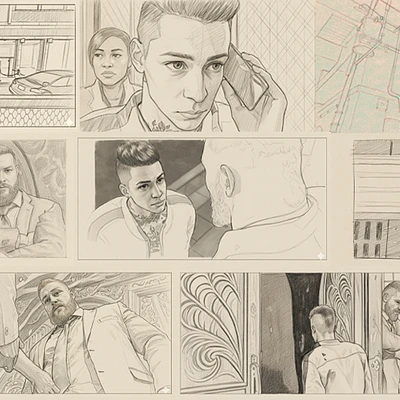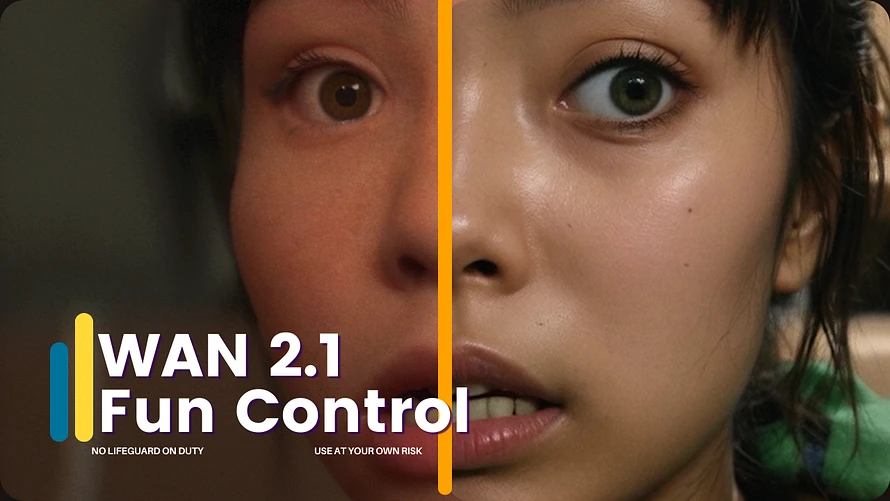NEW SHORT: Into the Night Owl Club 🦉 (MonStar Screen Test)
Oh Hey Void,
Today's short film drops us right into the shoes of Benny — a cowardly criminal who desperately wants to be tough.
🎬 The Scene
Benny gets a call from his crime boss with a simple job: deliver something to the Night Owl Club. Easy, right? Except Benny doesn’t realize the Night Owl is no ordinary nightclub. It’s a vampire den — a hidden party spot for the worst monsters in the city.
🛠️ The Tech Side
On the production side, this short film doubled as a workflow experiment. We tested the brand-new Wan 2.2 AI models guided by Unreal Engine 5 MetaHuman renders.
Here’s how it worked:
-
UE5 guides animation, lights, & character performance.
-
We then used Wan 2.2 with a Re-Styled Frame.
-
By feeding in custom ControlNet workflow, we re-styled the raw game engine look into something with more cinematic textures and detail.
It’s still a rough test — lots to learn and refine — but this process has huge potential to strip away the “game engine feel” and get us closer to film-quality visuals on an indie budget.
🚧 What’s Next
This is just the beginning of Benny’s night from hell. We’ll be sharing more scenes soon as we expand this into the full MonStar world.
Thanks for being here at the ground floor — where everything is rough, messy, and raw. You’re helping us shape what these films will become.
🖤 Amber + Jayson
Wan 2.2 Test w/ MonStar Benny
The last few weeks, we’ve been tinkering with Wan 2.2 + Fun Control and figuring out how to drop it into our pipeline. After months on Wan 2.1, 2.2 feels noticeably better at “locking in” identity and shape. There is less drift, and more consistency.
Render stats: this 1:39 clip took ~3 hours on a 4070 (12 GB VRAM) to generate about 20 clips. There was some trial and error. Here’s what worked for us.
Frame rate vs. frames per clip
We switched to 15 fps with 90 generated frames per pass.
-
That gave us ~6 seconds per batch, which let us build longer segments.
-
Our rig is happiest around 81 frames; we pushed to 90 anyway to squeeze out more runtime.
-
If you stick to 24 fps, the same frame budget only nets you ~3–3.5 seconds per batch, so your shots get choppier to stitch.
Lower OpenPose strength (to stop bleed-through)
Because the shot slowly pushes in, the Control Video started bleeding through and we got those white dot artifacts on Benny's face.
-
Dialing down the OpenPose blend strength in the final Control Video helped.
-
Close-ups: 0.25 worked well.
-
Wider shots: going below 0.30 messed up the eyes. It’s a balance.
Note: you can still spot a few dots if you look closely in the demo—we left them in for funsies.
Test the first and last frames
We didn't notice the issue mentioned above until halfway through.
So to catch mid-clip artifacts early, we started proofing the first 5 and last 5 frames of every 90-frame set. If dots show up there, they’ll usually pop mid-clip too.
Use the same first frame for every batch
Even with the push-in, using the same exact starting frame for all batches kept the face consistent across clips.
-
We first tried using the last frame of the previous batch to “match” into the next batch. That actually made the output drift/cartoonify over time, and the cut from last to first was obvious (Benny didn’t look the same).
-
Reusing the same start frame every time fixed it—even if expression or camera position didn’t match perfectly. Wan 2.2 figured it out.
Stagger frame starts (for cleaner blends)
We staggered starts by 10 frames to overlap batches:
-
Clip 1: 0-90
-
Clip 2: 80-170
-
Clip 3: 160- 250
Why: the overlap makes it easier to blend/crossfade batches and avoid hard color/contrast jumps. Net effect: a steadier, mostly seamless 1:30 shot.
Conclusion
Wan 2.2 is clearly better at teeth and eye movement, and with our ComfyUI workflow it’s already usable—but we’ve still got a few knobs to dial in.
Next up: a full scene test—more complex lighting, locations, and camera moves—to see how the model behaves under real production pressure.
If you want to experiment with a Wan Fun Workflow, don't forget that members also get access to the Wan 2.1 Fun Control Workflow we released earlier this week!
Wan 2.1 Fun Control - Frame 2 Frame Workflow
Hey Tech-Heads, this one’s for you.
After months of chaos, tweaks, crashes, and render miracles—we’re finally releasing our Wan 2.1 Fun Control workflow to members.
It’s the same setup we’ve used for:
🧪 WHAT IS IT?
This is our frame-to-frame (f2f) pipeline. It's a style transfer beast, not a perfect interpolator.
Think of it as a Runway Restyle alternative that lives fully inside ComfyUI.
You feed it:
-
🧠 Your raw video
-
🖼️ A restyled first frame
-
🤖 ...and let the machine do the magic trick.
⚙️ QUICK NOTES:
-
Built for style transfer.
-
First frame matters A LOT.
-
Includes Canny + DWpose + Depth Anything for triple-layer control
-
Needs decent RAM/VRAM (check specs in the product listing)
-
No support. No patches. No crying, please.
-
Not for beginners—you will need ComfyUI chops
⚠️ USE AT YOUR OWN RISK
This workflow is a Frankenstein remix of public ComfyUI tutorials. We made it functional-ish. It can probably be improved by smarter users.
No refunds. No promises.
Basic user manual included in the JSON.
🧠 SHOUTOUTS TO THE LEGENDS:
Huge thanks to the creators we learned from:
Drop your experiments, wins, or WTF moments in the comments.
We’ll cheer you on—just don’t ask us to debug the spaghetti.








